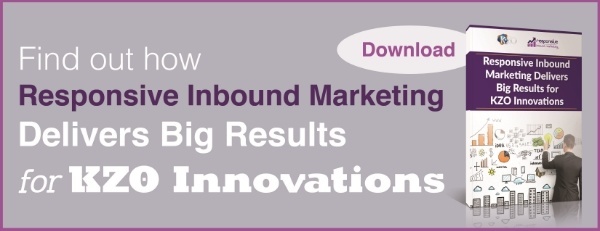You can’t really know if you’ve achieved a goal unless you have a way to measure what success is. For your company, understanding how effectively your marketing efforts are meeting business goals and objectives is crucial. KPIs, or key performance indicators, help you to gauge how your company is doing by giving you a way to measure.
Tracking the right metrics and analytics for your company will help you to get a clear picture of what’s working and where changes need to be made. That way, you can do more of what’s contributing to your goals and allocate resources appropriately. What’s tracked will be different for each department, depending on their unique objectives.
[DOWNLOAD]

KPIs are more than just metrics, and need to be measured against your goals. You should also use the insights you obtain to inform data-driven decisions. Otherwise, if you aren’t using data, what exactly are you basing big decisions on? A hunch?
According to HubSpot, the less companies know about their KPIs, the less likely they are to meet their revenue goals. 74% of companies that weren't exceeding revenue goals did not know their visitor, lead, marketing qualified lead, or sales opportunities.
What KPIs Should Be Measured?
Although you will need to decide what key performance indicators to measure for your company, these examples can help you to get started.
Sales Revenue
Revenue is obviously key for most businesses, and 70% of marketers say converting leads is their top priority, according to the 2017 State of Inbound. You’ll want to track how much revenue individual campaigns helped to bring in. This measurement will also show what campaigns are succeeding in generating customers, and you can focus your efforts.
Unique Website Visitors
This metric will help you to track how your efforts are driving traffic to the website. Higher traffic and more unique visitors are more opportunities to create leads for your business.
Traffic-to-Lead Ratio
Increasing traffic to your website is all well and good, but if those visitors aren’t converting into leads, then they aren’t actually as valuable. You want to know that you’re attracting quality visitors to your site, and your traffic-to-lead ratio can give you insight. These people are interested in what your company has to offer and have real potential to become customers.
Customer Retention
Although you want to grow your business with new customers, it costs 7x more to obtain a new customer than it does to retain a current one. It’s important to understand how well you are doing at making people want to remain customers.
Marketing Qualified Leads and Sales Qualified Leads
What makes someone a good fit for your business? What actions do they take that indicate readiness to buy? Understanding when you have a sales qualified lead will help you to focus on people that are ready to make a purchase, instead of wasting time on those who aren’t.
Return On Investment
Measuring KPIs will allow you to more easily calculate and understand the ROI of your marketing campaigns. Again, you want to be able to prove how effective your efforts are and to make sure that you’re spending your budget in the right places.
Landing Page Conversion Rate
This will help you to understand if a landing page is high quality. The goal for your landing pages is to generate leads, so you want to see how well a page is doing. If a landing page doesn’t seem to be generating leads, you can run A/B tests to see what can be improved.
Customer Acquisition Cost
How much does it cost to acquire a new customer with your marketing efforts? This is especially useful in determining where to spend your budget. You want to know which channels can generate the most customers, preferably at the lowest cost.
